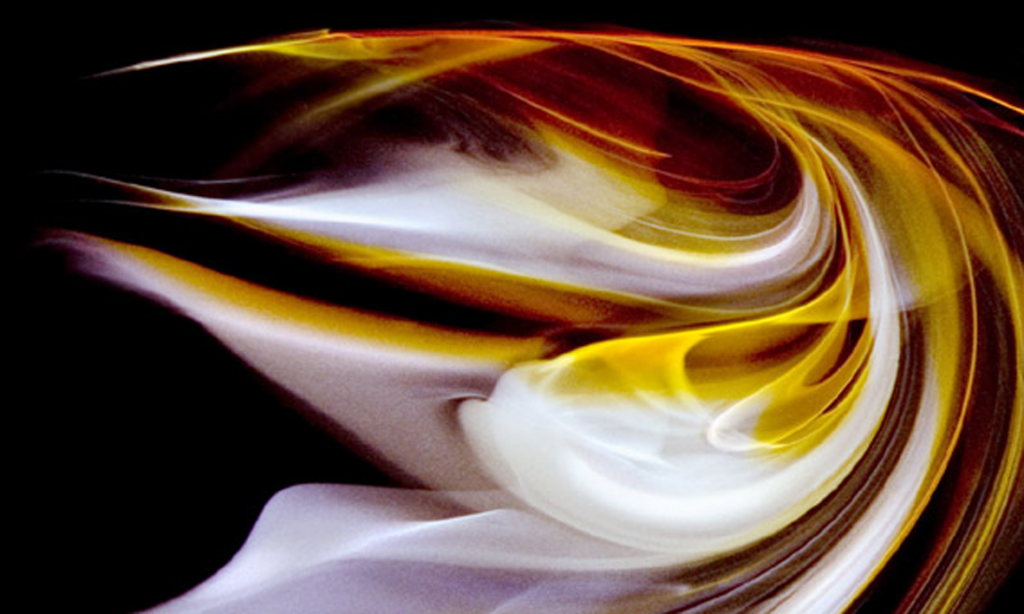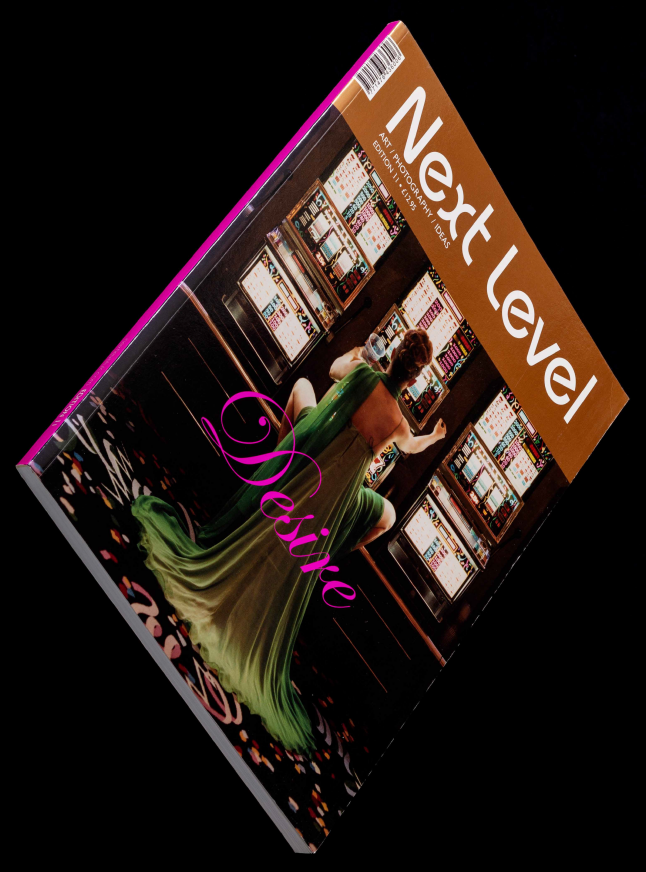Chris ParksMake Believe

Fusing mediums – the allure of the possible.
Chris Parks, marine photographer and artist, has a deliberate preoccupation for the imaginary. Dealing in sensory abstractions, his photographic works are orchestrated, designed and delivered as oblique templates of the underwater world to which he is so accustomed. Parks’ practice is so individual that any reference to art history and photo practitioners cannot perfectly contextualise his vocabulary. Trained as an engineer and reading industrial design at the Royal College of Art, Parks belongs to a custom-made specialist field of film-maker, photographer, artist and designer. These disciplines have cleverly informed and influenced his practice beyond our more familiar understanding of photography. His works are derived from the underwater world and exist as records of the photographer’s laboratory performance. They are in that sense as alien to the eye as the marine life that he appreciates and portrays. “My work is a progression of my marine photography and grew partly out of a desire to communicate the experience of life underwater.”
Parks’ father Peter, a pioneering cameraman for the groundbreaking documentary series Life on Earth for which he was acknowledged with three technical Oscars, has been an influence on the artist. His father’s huge achievement was there to be emulated, yet Parks prefers to create some of his own success. Some recognition has come already; for example, director Darren Aronofsky’s invitation for him and his Quest 3-D colleagues to provide abstract visuals for the 2006 feature film The Foundation, featuring Hugh Jackman and Rachel Weisz. Beautifully dark and otherworldly, the film is enchanting and thoroughly memorable for the graphics from its futuristic sequences and the way they illuminate the film, confirming Parks’ own ability to conjure delicate forms and colours out of his brilliant imagination.
Attempting to visualise an abstract sense of otherworldliness, the film delivered something of an appropriate metaphor for Parks’ own underwater works and his photographic prints of planetary activity. Conceiving of a body of works entitled Fluid paintings Parks explains the aura of his print works and of their conceptualisation. “Fluid paintings are essentially static (in that the camera catches them as a moment in time), but – and interestingly – they are an abstract expression of something specific, such as sound underwater. A lot of the ideas I’m exploring hark back to the underwater realm.” Discussing his technique, Parks eloquently describes how his works are determined by how much paint is thrown down. “Depending on what it is I am trying to achieve. I will (then) use a combination of very subtle fluid movements or flows, further brush or needle strokes or time, to achieve the feeling of movement or depth that I am looking for. Once I have what I want, I will then place the painting under the camera and capture it. I can be working on the fluid painting for anything up to twenty-four hours before it is complete.” The act of manipulating the paint on the canvas and then photographing it makes for a secondary intervention. Art history and contemporary practice is a good vehicle to begin to interpret Parks’ art. His rigour for invention is similar to that of the German photographer/artist Thomas Demand, whose projects involve the detailed construction of a 3D set for the sole purpose of photographing it. Parks’ energies are equally divided between the impulse to paint and the subsidiary action of photographing these actions.
“My starting points are the movement of marine organisms and how light plays underwater, so the transparent liquid is my canvas, albeit a three dimensional one.” His works share an affinity with some of the colours of the early Fauvist movement in the 1910s and the paintings of André Derain and Maurice de Vlaminck. Parks alludes to something more sensory than all the technology that surrounds him. He employs colours as Derain himself might have, looking for areas of both intensity and subtlety. Such contrasts create his signature forms. The organic shapes that appear to float in the confined spaces he depicts become the figures in his landscape and the forms in his mind when placed under the photo-lens.
Parks’ works have the principles of chance about them; as much as he controls the apparatus he uses, his decision to photograph paints and pigments is beautifully problematic. The straight photographer becomes the artist and some of the certainty that is inherent to photography has been substituted for the emotive energies of the artist.
When asked about painting, Parks intuitively refers to the contemporary jargon works of British painter Fiona Rae, who deals with her medium in a stylised abstraction of gestures and forms that unfurl spatial complexities; this is something that also informs some of Parks’ concerns when manipulating colours to his own ends. Parks is also very interested in Rob and Nick Carter’s work, specifically their highly detailed photographs of the residual texture of paint layers. That series, from 2004, engages with the relationship between the physical qualities of paint over the flatness and texture-less qualities of photography. In order to capture the brilliant texture of the paints’ organic forms, these works pay special attention to its material qualities, a pursuit seen as well though to very different results in German painter Gerhard Richter’s canvases.
Parks is aware of the influence of other painters and photographers’ works on his own. Like Rae and the Carters, he has demonstrated an ability to employ paint in order to stretch photography’s representational properties and its intentionality. His works are a dedication to the enormity of space, originating from his interest in the oblique otherness of a figurative underworld. Parks’ laboratory-style conditions set in motion a deliberate set of actions between the science of photography and the chaos that consumes the fluid form of paint. The artist believes that there is a levelling between the properties of paint and the operational mechanics of the camera, between the laboratory and his lens. “For me the camera that I use to capture my fluid painting is as much a tool as the brush that I use to create it, the liquid that I work within as much a ‘canvas’ as the paper the finished piece is on.”
